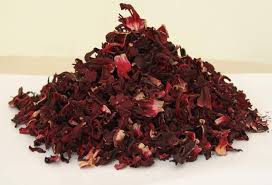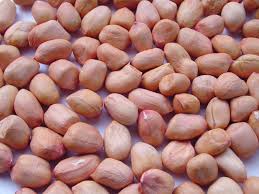Greenhouse Tomatoes Cultivation in Nigeria; The Feasibility Report.

omato (Lycopersicon esculentum) is one of the most widely grown vegetables in the world. Tomato has been in cultivation in Nigeria for a very long time. It is an important component of the daily diet, consumed both fresh and in paste form.
Tomato is a rich source of vitamin A & C and is cultivated over vast area of land in the world. It has its origin from the city of Mexico where it was named as Tomatile.
Then its cultivation started in Central America and subsequently shifted to Europe. It is popular due to its color, taste & food value. Tomato has long been processed into Ketchup in Italy, Turkey, Greece, USA and European countries. It is used in large quantity at household and restaurants in the shape of tomato juice, tomato puree and paste. These products are also gaining popularity in Nigeria.
In Nigeria, an annual total area of one million hectares is reportedly used for its cultivation producing about 2.5 million tons at 25 ton per hectare while it makes up about 18 per cent of the average daily consumption of vegetables in Nigeria homes.
Tomato may be eaten fresh as salad or they may be pressed into pastes or purees, which are used for cooking in soups or stews and producing fruit drinks. It can also be processes into juice or ketchup. Tomato is grown in many parts of Nigeria both as wet and dry season crops.
Over the years there has been tremendous increase in the demand for tomato paste and allied products in Nigeria.
This is because
1. The eating habits of most Nigerians have changed considerably with better enlightenment; they now eat more of European foods, which require a lot of tomato puree.
2. The packaging of tomato puree makes it easier for usage in homes and hotels
3. The nature of most of our staple foods {mostly starch and vegetable based} with its relatively heavy reliance on tomato, vegetable soups and stews.
Indeed, tomato consumption by the food processing industry revolves around the availability of user friendly intermediate products like tomato paste, puree, ketchup and sauces.
Investment opportunities exist in greenhouse tomato production. This involves the installation of hundreds of units of greenhouse facilities of 8m by 24m size per unit with drip irrigation system that creates controlled environment for all season production of high quality tomato.
Greenhouse technology offers a better alternative to the open field farming because of the effect of climate change and bacterial blight disease associated with open field tomato production.
This report seeks to examine the financial viability or otherwise of establishing a greenhouse farm for tomato cultivation in Nigeria.
The proposed farm would occupy a land area of forty (40) hectares while the civil construction, farm house and warehouse would occupy fifteen (15) hectares. The farm would cultivate the Chibili variety of seeds which requires about three (3) weeks in the nursery for it to be ready for transplanting and sixty (60) to seventy five (75) days for the first harvest.
Table of Contents
EXECUTIVE SUMMARY 1.0 Business Overview 1.1 Description of the Business 1.2 Vision and Mission Statement 1.3 Value Proposition 1.4 Critical Success Factor of the Business 1.5 Current Status of Business 1.6 Description of the Business Industry 1.7 Contribution to Local and National Economy 2.0 Agricultural Practice 2.1.0 Variety 2.1.1 Nursery 2.1.2 Transplanting 2.1.3 Weeding and Fertilizers 2.1.4 Climate / Irrigation 2.1.5 Harvesting and Yield 2.1.6 Spacing and Germination 2.2 Factors of Production/ Cultivation 2.2.1 Soil Type 2.2.2 Diseases and Pests 3. Marketing Plan 3.1 Description of product 3.2 Product Packaging and delivery 3.3 The Opportunity 3.4 Pricing Strategy 3.5 Target Market 3.6 Distribution and Delivery Strategy 3.7 Promotional Strategy 3.8 Competition 4. Production Plan 4.1 Description of the Location 4.2 Raw Materials 4.3 Production Equipment 4.4 Production Process 4.5 Production Cost 4.6 Stock Control Process 4.7 Pre-Operating activities and expenses 4.7.1 Operating Activities and Expenses 4.8 Project Implementation Schedule 5.0 Organizational and Management Plan 5.1 Ownership of the business 5.2 Profile of the promoters 5.3 Key Management Staff 5.3.2 Management Support Units 5.4 Details of salary schedule 6. Financial Plan 6.1 Financial Assumption 6.2 Start – Up Capital Estimation 6.3 Source of Capital 6.4 Security of Loan 6.5 Loan Repayment Plan 6.6 Profit and Loss Analysis 6.7 Cash Flow Statement 6.8 Viability Analysis 6.0 Business Risk and mitigation factor 7.1 Business Risks 7.2 SWOT Analysis
Project Specification:
Additional Info
Get this Report
Direct bank transfer
To order the report, Please do pay the sum of ₦200,000 into
Account Name : Foraminifera Market Research Ltd
Account Number : 274 20 569 37
Account Name : Foraminifera Market Research Ltd
Account Number : 101 76 603 95
Account Name : Foraminifera Ventures
Account Number : 011 66 066 32
Make your payment directly into our bank account. Please use your Order ID as the payment reference. Your order will not be shipped until the funds have cleared in our account.
Instructions
After payment call us on 01 -29 52 413 / 08033782777 or email us at foraminiferamarketresearch@yahoo.com with the payment details. After payment confirmation, the soft copy of the report would be sent to you within 24 hours.



